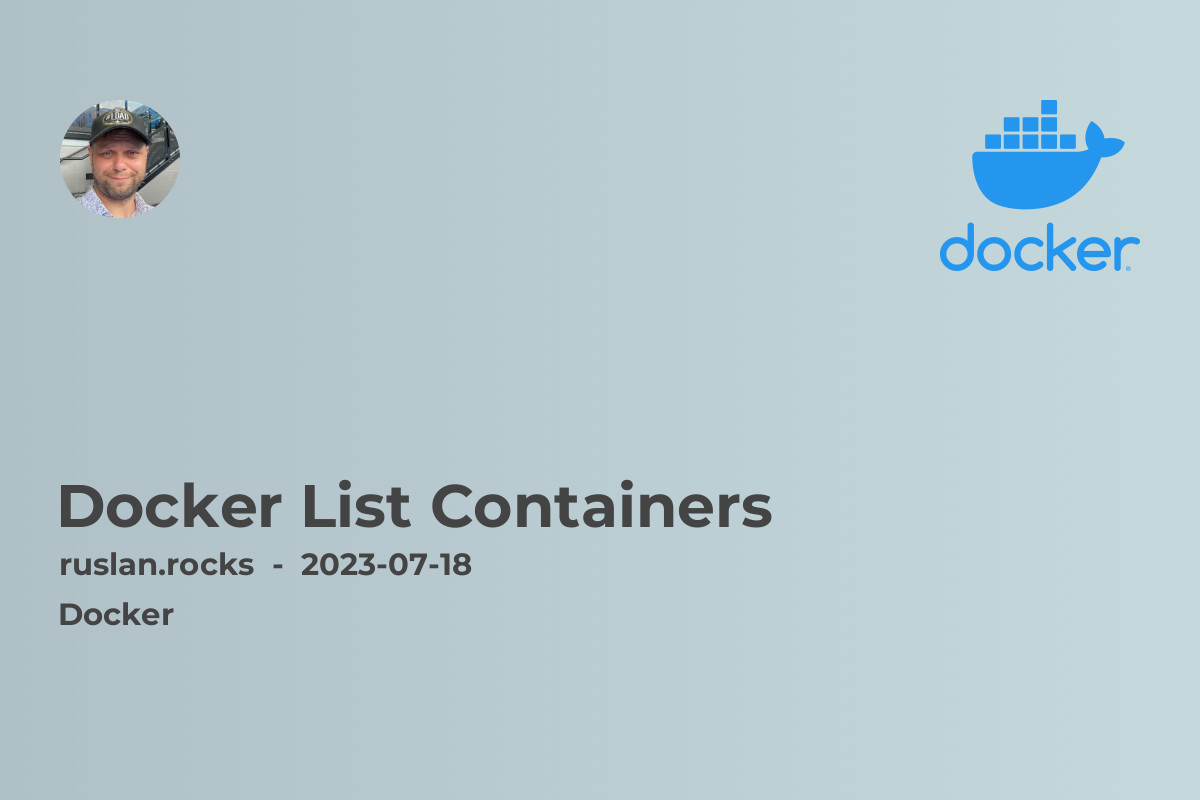- Using the Docker CLI
- Using Docker Compose
- Using Docker API
- Using Third-Party Tools
- Conclusion and Further Reading

If you are working with Docker, you may need to know how to list containers. In this article, we will explore different methods to list containers using Docker command-line interface (CLI). Whether you are a beginner or an experienced user, understanding how to list containers is essential for managing your Docker environment.
Using the Docker CLI
To list containers, you can use the docker ps command. This command shows all the running containers on your system. It provides information such as the container ID, image used, command running inside the container, and other details. If you want to see all the containers, including the ones that are not running, you can add the --all flag to the command: docker ps --all.
Using Docker Compose
If you are using Docker Compose to manage your containers, you can use the docker-compose ps command to list all the services defined in your Compose file. This command will show the status of each service, including whether it is running or stopped. By default, it will only show the services that are running. To see all the services, you can add the --all flag to the command: docker-compose ps --all.
Using Docker API
If you prefer a programmatic approach, you can use the Docker API to list containers. The Docker API provides a RESTful interface that allows you to interact with Docker programmatically. You can use any programming language that supports HTTP requests to access the Docker API and retrieve information about containers.
To list containers using the API, you need to send a GET request to the /containers/json endpoint. This will return a JSON response containing information about all the containers on your system. You can then parse this response and extract the information you need.
Using Third-Party Tools
In addition to the native Docker tools, there are also third-party tools available that can help you list containers and manage your Docker environment. Some popular tools include Portainer, Kubernetes, and Rancher. These tools provide a graphical user interface (GUI) and additional features that can make it easier to manage and monitor your containers.
Conclusion and Further Reading
In this article, we have explored different methods to list containers using Docker. Whether you prefer using the Docker CLI, Docker Compose, the Docker API, or third-party tools, there are multiple options available to suit your needs. Remember that understanding how to list containers is crucial for managing your Docker environment effectively.
For more information on Docker and containerization, check out the following articles:
- What Is Docker: Learn about the basics of Docker and how it revolutionized application deployment.
- Managing Microservices With Docker Swarm And Kubernetes: Explore how Docker Swarm and Kubernetes can help you manage microservices.
- Docker Vs Kubernetes: Which Container Orchestration Tool Should You Choose?: Compare the features and benefits of Docker and Kubernetes to decide which one is right for you.
- Docker Compose Install: A Comprehensive Guide: Find out how to install and use Docker Compose to manage your containers effectively.
- Docker Remove Container: Learn how to remove containers from your Docker environment.
By exploring these articles, you will gain a deeper understanding of Docker and its related technologies, enabling you to optimize your containerization workflows and enhance your overall development experience.
